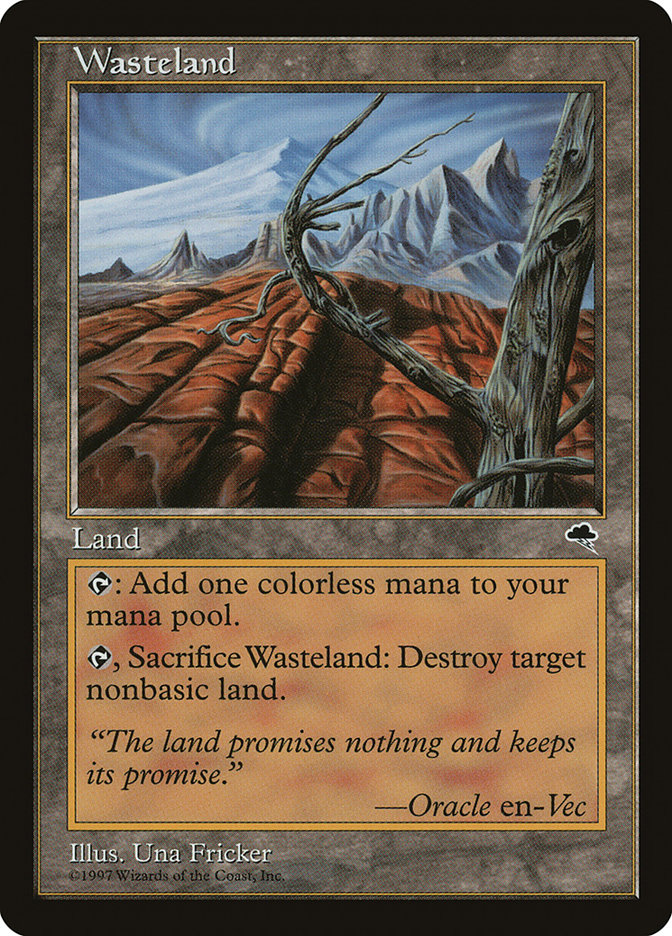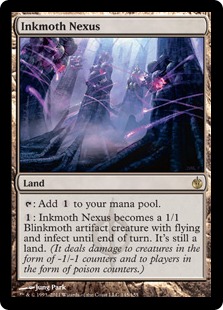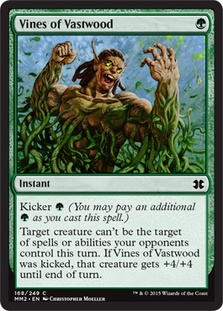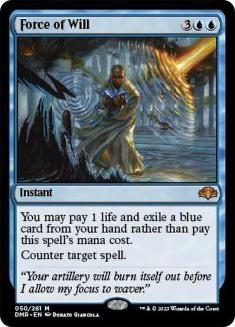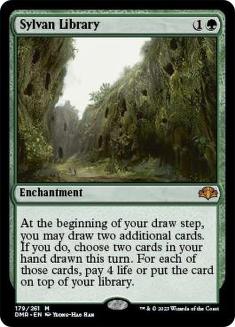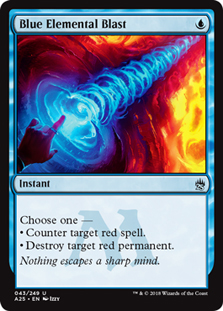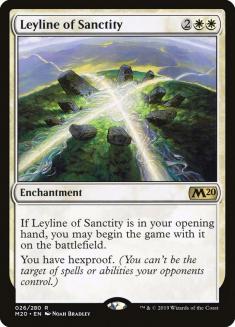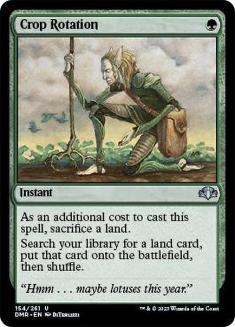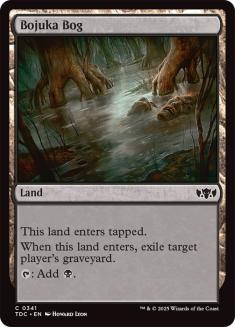There will always exist four core archetypes in Magic.
Aggro
Control
Midrange
Combo
Some of these blend together. Is Mantis Rider an aggro or midrange card? What categorization does a deck with Delver of Secrets and counterspells fall
under? Regardless of description, once a metagame is established and people have a feel for what the top tier decks are capable of, people better
understand the range of what a deck a capable of doing, both pre- and post-sideboard. Sometimes a key component to sideboarded games is placing your
opponent in a role that they’re either unfamiliar with or don’t expect to be in.
Role Reversal
What makes Brad Nelson so dominant at Standard? He recently went 9-1 during the Constructed portion of Pro Tour Dragons of Tarkir with what I figured would
be the most popular deck there:
Creatures (21)
- 4 Fleecemane Lion
- 4 Anafenza, the Foremost
- 4 Rakshasa Deathdealer
- 4 Siege Rhino
- 2 Warden of the First Tree
- 3 Surrak, the Hunt Caller
Lands (26)
Spells (13)

The deck had some Surrak, the Hunt Callers and Wardens of the First Tree, but those aren’t exactly extremely innovative additions. When asked about why he
did so well, he proudly said, “We made three last-minute sideboard changes, and they were all perfect.” He’d talk about how after sideboard, his opponents
would try to make his Surraks weak and non-ferocious when he sideboarded them out every single time. In matchups where he was very unfavored, he’d
get crushed game 1 only to outmaneuver in the next two easily. It’s how he finishes matches that separates him from the rest.
Drive for Show, Putt for Dough
While the deck is labeled Abzan Aggro, that doesn’t mean you’re necessarily the aggressor in every matchup. Against Mono-Red, for example, you take a
control role. In the mirror, you’re either jockeying for position or taking a role based on the play or draw. The biggest mistake you can do is to try to
muscle your primary “60-card role” through every situation. You have fifteen more tools at your disposal in your sideboard. You don’t always have to be a
hammer making everything else a nail.
There’s a glimmer of combo in Standard right now with Jeskai Ascendancy, but outside of that, every deck falls somewhere on the aggro, midrange, or control
spectrum. While it’s common for people to sideboard in answers to the opposing threats, thus “controlling” the game more-so, it’s possible to tick down on
the spectrum. This is something that Brad did at Grand Prix Memphis.
Creatures (10)
Planeswalkers (3)
Lands (26)
Spells (21)

Four little ole’ Fleecemane Lions made all the difference. Over and over opponents would sideboard out their Lightning Strikes and Bile Blights in favor of
Outpost Siege or Disdainful Stroke only to find the game escalating much faster than expected. Then, of course, if a game 3 came along, the opponent might
be siding in removal for a card that Brad may be taking out. Putting your opponent to tough decisions is the name of the game, even between games.
Mana Curve
Game 1, especially with two very streamlined decks, can be like two ships passing in the night. Interaction is low, and it’s basically a race to see whose
deck can do its thing faster than the other.
However, after sideboard, both decks are prepared to play a more interactive game. The slower deck lowers its curve, while the faster deck brings in
tougher threats. Overall though, the games slow down as more cards are bouncing off each other instead of avoiding each other. Because this happens, the
games tend to go on longer and more lands are drawn throughout the game. Here, we justify having higher-cost spells in sideboards, even without the
requisite additional mana source(s) to warrant them in the maindeck. An example is the Abzan Aggro list from earlier that would sideboard in Wingmate Roc
and Elspeth, Sun’s Champion when expecting the games to go to turn a million.
Land Counts
For most of my experience with Legacy, I’ve been a firm believer that many decks should be playing about one more land than they do. Why?
Wasteland decks like U/R Delver aim to constrict your resources, leaving you with uncastable spells in hand. With the low land counts and high non-basic
counts in Legacy, this is a fine plan to have.
Common thought processes when choosing to keep Legacy opening sevens:
“If they Stifle this fetchland, I’m toast.”
“If they Lightning Bolt this Deathrite Shaman, then Wasteland me, I got nothing.”
Rishadan Port. Thalia, Guardian of Thraben. Even playing around Daze and Stifle are all great reasons to add in that extra mana source.
I like to err on the side of caution with my Legacy landcounts. So what if you aren’t playing against a Wasteland deck? Sideboard out a land. I’ve seen
people adjust a list, trimming from twenty to nineteen, likely because of flood in some games. The truth is they’re not wrong in feeling that the landcount
is a touch too high, because. in fact, it is.
Creatures (12)
Lands (20)
Spells (28)

A few snippets of how I sideboard in some of the more extreme matchups.
VS Storm
Out:
In:
In comes one land, but four come out! For a matchup this fast where the game can be won or lost on either end as early as turn 2 (or sometimes the first
turn, in Storm’s case) there simply isn’t time to fool around with the grindy game that Inkmoth Nexus is great at. One Inkmoth remains as a target for Crop
Rotation.
Sideboarding out the Forest, too? Forest is a card that’s there mainly as a concession to Blood Moon and Price of Progress. Wasteland and islandwalk from
Merfolk come up seldomly, not enough to be real factors. During my last few tournaments I’ve been sideboarding out basic Forest more and more, and it took
me more than twenty events before I even considered doing so. When it doesn’t do anything special (which is to prevent blowouts) it’s probably the weakest
card in the deck. That compounded with wanting a saturation of spells against discard and blue for Force of Will make for a sideboarding option that makes
sense here.
In contrast, there exists a card in Modern that slightly nudges me as a deckbuilder to play a tad lighter on lands.
While I don’t suggest you starting your maindeck short a land, do take into consideration that you will tend to have more lands in play on average versus
an opponent packing Path to Exile. Now that Snapcaster Mage exists, this only amplifies the issue.
In earlier times, within the first year of Path to Exile’s printing, three- and four-color creature decks featuring an assortment of animals was a popular
deck in Extended (the precursor to Modern). This “Zoo” of wild beasts was packed with both cheap creatures and removal and was the go-to beatdown strategy
of its time.
Creatures (24)
- 4 Kird Ape
- 4 Tarmogoyf
- 2 Ranger of Eos
- 4 Wild Nacatl
- 3 Knight of the Reliquary
- 3 Qasali Pridemage
- 4 Loam Lion
Lands (20)
Spells (16)
Sideboard

Given its popularity, believe me that there were plenty of mirrors squaring off. But Pat Cox had a piece of key inside info to the mirror matchup…
Basically everything trades. Your bolts hit their Wild Nacatls. Paths hit Knights and ‘Goyfs. After the dust settles, the player with the last creature in
play generally ended up the victor. So the secret?
Sideboard out 2-3 lands.
And Path to Exile played its part to this formula as well. Certainly you could find yourself on the wrong side of the variance spectrum here and draw a
string of zero-land hands to curse this sideboard strategy, but in general, Zoo is capable of operating reasonably well for a while off just one land.
Unknowing opponents would flood out in sideboard games while the savvy players would be left with the last monster standing.
The Transformational Sideboard
Josh Utter-Leyton and his team brought Jeskai Ascendency Combo to the Modern portion of the World Championships this year. Not only was their deck very
good, they had a nice sideboard plan of switching into a Gifts Ungiven deck that aimed to get Elesh Norn, Grand Cenobite into play early against creature
decks or Iona, Shield of Emeria against the slower decks.
Creatures (4)
Lands (22)
Spells (34)

While I like the idea of coming at your opponent with a new plan, I didn’t like the fact that both strategies heavily used the graveyard. The opponent
would be sideboarding in cards like Relic of Progenitus and Grafdigger’s Cage anyway, which would invalidate the alternate gameplan too.
This is the Jeskai Ascendency deck that I preferred during that time period:
Creatures (7)
Lands (21)
Spells (32)
- 4 Lightning Bolt
- 4 Serum Visions
- 2 Path to Exile
- 4 Gitaxian Probe
- 2 Faithless Looting
- 4 Thought Scour
- 2 Izzet Charm
- 4 Treasure Cruise
- 2 Dig Through Time
- 4 Jeskai Ascendancy
Sideboard

A Jeskai Ascendency Combo deck that sideboards into…a normal deck!
This strategy isn’t breaking news; however, Splinter Twin decks have been sideboarding out a lot (if not all) of their combo pieces in favor of “normal”
cards like Vendilion Clique, Keranos, God of Storms, and Batterskull for a while now. These are the times to shuffle your entire fifteen-card sideboard
before fanning through your 75 and selecting fifteen cards to take out. They don’t know what to do going into a game 3.
The concept of stranding enchantment removal in the opponent’s hand isn’t a new concept, there are many examples of combo decks sideboarding out their
combos. First is one that switches into a midrange beatdown deck.
Creatures (9)
Lands (22)
Spells (29)

While Craig Jones topdecking Lightning Helix to beat Olivier Ruel is the most memorable, the second most, for me, is the complex sideboarding guessing game
both Max and his opponent played in their best-of-five match. I remember them each reaching and re-reaching for their deckboxes when the other would over
and over, agonizing wondering what the other was planning.
Lands (22)
Spells (38)
- 2 Brainstorm
- 4 Counterspell
- 4 Force of Will
- 4 Accumulated Knowledge
- 1 Impulse
- 1 Capsize
- 3 Intuition
- 4 Merchant Scroll
- 4 Donate
- 4 Illusions of Grandeur
- 4 Sapphire Medallion
- 3 Fire
Sideboard

This is an example of combo sideboarding into full-on control with only three Morphing as win conditions. Three was the key number, as you could Intuition
for all of them as an effective instant-speed Demonic Tutor. Kai was ready for a field of Seal of Cleansings, not with a bounce spell or a counterspell,
but with crafty sideboarding.
Matches are two-of-three, and many of us don’t make the most of it. Common sideboard cards are easy to identify, but sometimes Glare of Heresy or Encase in
Ice isn’t what you should be looking for. Minor upgrades are nice and often necessary to ensure you have decent game against the more popular decks in the
field. But sometimes the best approach isn’t to make your deck more efficient versus their deck, but instead, to circumvent a key part of their
counterattack by going around it altogether.
By having a 75 capable of switching gears you retain control and keep your opponents continuously guessing, which in turn gives them opportunities to make
mistakes. The more angles you attack from, the harder it is for them to defend.

